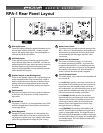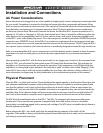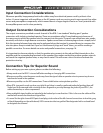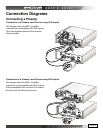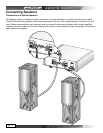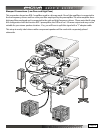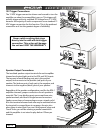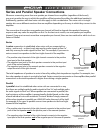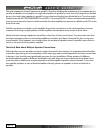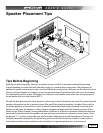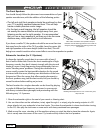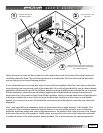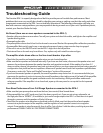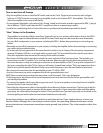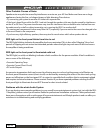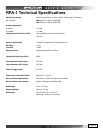
Page 18
Page 19
The total impedance of equal speakers in parallel is found by dividing the impedance of one speaker by the
number of speakers. For example, two eight ohm speakers in parallel is a four ohm load (eight ohms divided
by two), four eight ohm speakers in parallel is a two ohm load (eight ohms divided by four). Two ohm single
channel loads are NOT RECOMMENDED for the RPA-1! Running the RPA-1 below recommended impedance
level can cause excessive heat and will eventually drive the amplier into protection (blinking red LED on the
front of the unit).
Parallel connections are harder on the amplier than series connections, as the total impedance is lower
compared to driving a single speaker, and the amplier must produce more current to drive them.
Ideally, the total average impedance should be no less than 4 ohms per channel. You must make sure that
the lower impedance does not cause the amplier to overheat, shut down, blow the line fuse, or trip your
circuit breaker. If this happens, you should reduce the number of speakers wired in parallel, rewire them in
series, or use more than one power amplier.
Technical Note about Multiple Speaker Connections
Although there are two possible connection types discussed in this manual, it is imperative that with either
connection type that you use loudspeakers of the same type and nominal impedance for these connections.
In doing so, you have the most predictable outcome for your installation. When speakers of dierent
nominal impedances and/or dierent bandwidths are used, there are many other acoustic problems that
come into play in addition to complex impedance at the amplier’s speaker output terminals. If you must
use multiple speakers on any individual amplier channel, please use speakers as close to identical as
possible.



